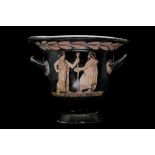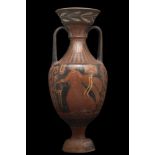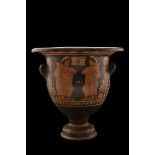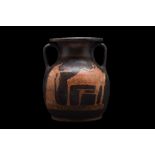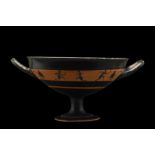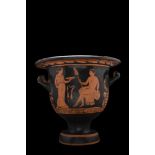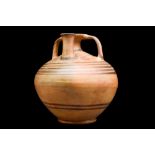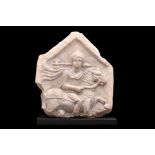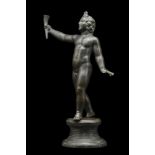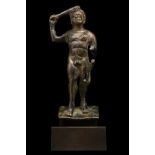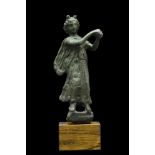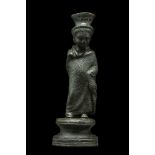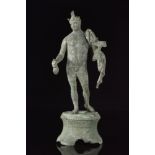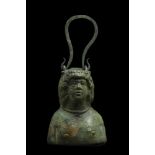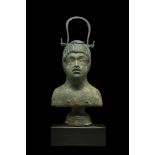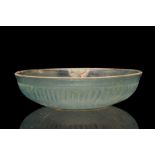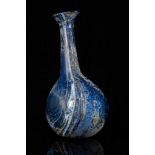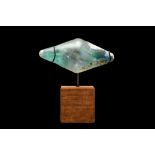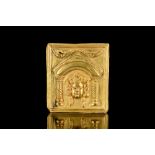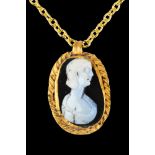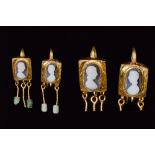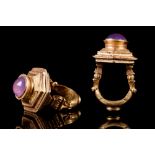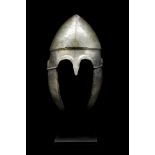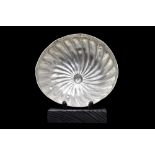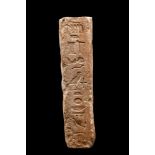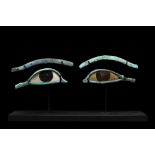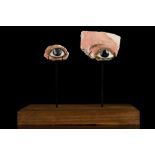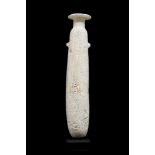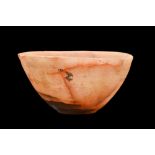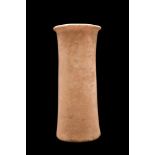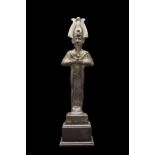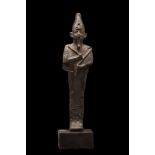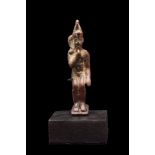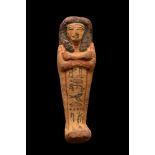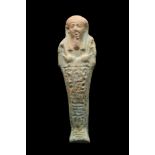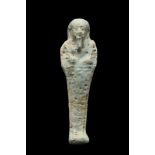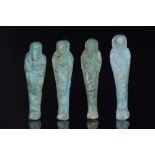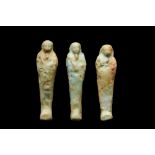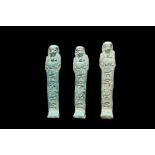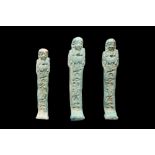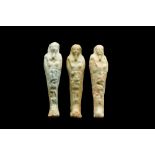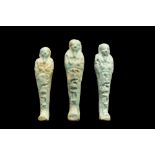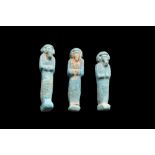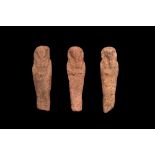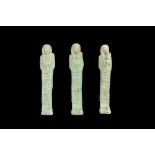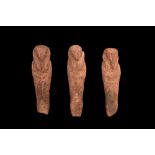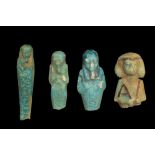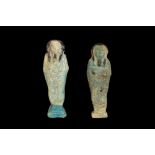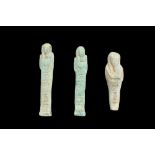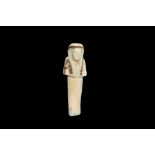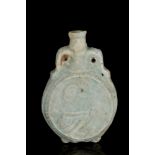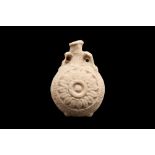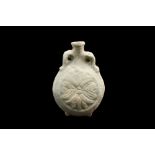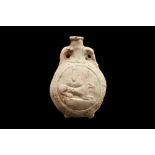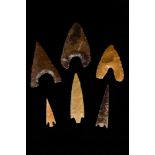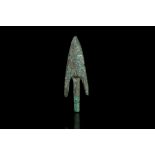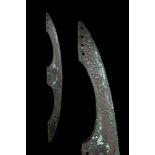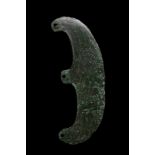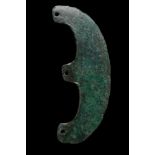Refine your search
Estimate
Category
- Jewellery (91)
- Arms, Armour & Militaria (89)
- Greek, Roman, Egyptian & Other Antiquities (86)
- Chinese Works of Art (35)
- Ceramics (34)
- Sculpture (34)
- Coins (32)
- Salvage & Architectural Antiques (30)
- Glassware (28)
- Books & Periodicals (15)
- Collectables (13)
- Porcelain (11)
- Scientific Instruments (11)
- Metalware (8)
- Vintage Fashion (7)
- Stamps (5)
- Kitchenalia (3)
- Taxidermy & Natural History (3)
- Classic Cars, Motorcycles & Automobilia (2)
- Indian Works of Art (2)
- Lighting (2)
- Textiles (2)
- Tools (2)
- Clocks (1)
- Ethnographica & Tribal Art (1)
- Furniture (1)
- Islamic Works of Art (1)
- Musical Instruments & Memorabilia (1)
- Oil, Acrylic paintings & Mixed Media (1)
- Sporting Memorabilia & Equipment (1)
- Watercolours (1)
- List
- Grid
A subscription to the Price Guide is required to view results for auctions ten days or older. Click here for more information
Ca. 500-400 BC. A rare terracotta bell krater featuring a pedestal foot, cylindrical flared stem, inverted bell-shaped body, two upturned handles ...
Belonging to the White Saccos-Kantharos Group, Ca. 320 BC. A huge and beautiful red figure Apulian amphora. On one side is a Maenad moving towards...
Apulian, Ca. 400-300 BC. This beautiful red-figure bell terracotta krater with everted rim features a pedestal foot, a cylindrical stem, a bell-sh...
Ca. 2nd half of 4th century BC. A red-figure pottery hydria with a characteristic bulbous body with a short, splayed foot, a funnel-shaped neck wi...
Ca. 3rd century BC. Superb Attic pelike jar with an out-turned rim, flaring neck, squat body, and flattened base; two strap handles attached at th...
Ca. 550-525 BC. A beautiful pottery kylix decorated via the black-figure technique on the exterior walls of both sides, hemispherical body with tw...
Attributable to the Dijon Painter, Ca. 380 - 360 BC. A red-figure krater with a pedestal foot, cylindrical stem, inverted bell-shaped body, and tw...
Late Helladic IIIB, Late 14th-13th century BC. A large decorated tan color pottery vessel having a round tapered body, twin opposing strap type ha...
Ca. Early 1st century BC. A magnificent marble relief stele of pentagon shape, finely carved with the relief of a young Apollo on horseback, hold...
Ca. 100 AD . The plump figure depicted nude, striding forward with his right leg advanced, his left arm stretched holding a horn, his long wavy ha...
Ca. 300-200 BC. An Eastern Greek cast bronze statuette of Herakles modelled to a fine standard. He stands in the position of a hero with his left ...
Ca. 100-300 AD. A charming cast bronze statuette is the representation of Diana (in Greek Mythology Artemis), goddess of the hunt, presented in a ...
Ca. 300-100 BC. Standing upright with a long illustrious dress, this statuette represents a goddess with young childlike features wearing a stylis...
Ca. 100-200 AD. A finely detailed figure showing the god Mercury (Hermes in Greek mythology), wearing a winged cap which identifies him as the mes...
Ca. 100 AD. A bronze balsamarium in the form of a bust of Bacchus the Roman god of agriculture, wine and fertility, equivalent to the Greek god Di...
Ca. 100 AD. A bronze balsamarium in the form of a bust of African male youth. The boy is depicted with upcast eyes and his face features broad nos...
Ca. 200 BC - 100 BC. A phiale in a pale blue fabric with a simple rim, a hemispherical bowl, flattened base and moulded vertical pillars. Excellen...
Ca. 100-300 AD. Dark blue unguentarium with flaring rim, elongated neck and globular body. The deep blue colour of this glass is both beautiful an...
Ca. 100-300 AD. A glass stopper of biconical shape. It was made using traditional glassmaking techniques that have been perfected over centuries o...
Ca. 100-300 AD. A magnificent gold plaque, almost square with a raised depiction of an actor's mask within the naos of a temple surmounted by two ...
Ca. 200 AD. A gold ovoid pendant with a suspension loop and a rope-patterned border enclosing a white on black sardonyx cameo depicting a bust of ...
Ca. 100-200 AD. A remarkable pair of gold earrings, each comprised of a loop and a rectangular-shaped box bezel set with a finely rendered sardony...
Ca. 3rd-1st century BC. A large gold finger ring composed of a highly ornamented hoop with a small cabochon to the rear and a hinged mechanism at...
Ca. 500-300 BC. A beautiful example of a tin bronze Greek Chalcidian helmet. The bowl is forged in one piece, featuring high-arched eyebrows below...
Ca. 400 BC. A beautiful silver phiale or shallow bowl featuring a wide body and flattened base. Extensive repoussé decoration comprises a domed ce...
Fifth Dynasty, Ca. 2645 - 2323 BC. A large limestone fragment from a false door or lintel consisting of a rectangular body inscribed with an offer...
Third Intermediate Period to Late Period, XXI - XXX Dynasty, Ca. 1070 - 343 BC. Each eye ever watching, from a separate anthropoid sarcophagus, br...
EGYPTIAN GLASS EYE INLAYS
Roman Period, Ca. 30 BC - 323 AD. Of convex form with opaque, white sclerae inset with black irises, and deep-blue cosmetic lines extended at the ...
Late Period, Ca. 664-332 BC. The elongated body on a rounded base, with a wide, thin disk rim, two vestigial lug handles. Fine condition. Mounted ...
EGYPTIAN ALABASTER BOWL
Old Kingdom, Ca. 2686-2160 BC. A fine alabaster vessel, featuring a flat foot, a bulbous body with the sides flaring outwards terminating at a sli...
Old Kingdom, Dynasty 5 to 6, Ca. 2454-2143 BC. An elegant large carved alabaster corset shape cylinder vessel, having a mottled tan and cream colo...
Late Period, Ca. 664-332 BC. Cast in bronze, the figure in mummiform posture, hands emerging crossed, holding crook and flail, symbols of kingship...
Late Dynastic Period, Saite Period, Ca. 664- 332 BC. A bronze figure of Osiris standing mummiform with his hands emerging from his cloak, holding ...
Late Period, Ca. 664-332 BC. A finely cast bronze figurine of the young god Harpocrates. He is represented nude, infantile, and in a seated positi...
New Kingdom, 19th - 20th Dynasty, Ca. 1292-1085 BC. A well moulded terracotta shabti, wearing the trepartide wig, holding hoe and mattock, basket ...
Late Period, Ca. 664-332 BC. An ancient Egyptian blue faience ushabti. The mummiform figurine wears a tripartite wig, his crossed hands hold hoes....
Late Period, 30th Dynasty, Ca. 332 BC. A mummiform figure in the form of an ushabti, moulded in a light-blue, glazed faience, wearing a tripartite...
Late Period, 30th Dynasty, Ca. 332 BC. A group of four mummiform ushabtis, each wearing a plain tripartite wig; the arms are crossed on the chest,...
Late Period, 30th Dynasty, Ca. 332 BC. A group of three ushabtis in mummiform pose, each wearing a plain tripartite wig; the arms are crossed on t...
Late Period, 30th Dynasty, Ca. 332 BC. A group of three light blue faience ushabti figures, each wearing a tripartite wig, a false beard, and with...
Late Period, 30th Dynasty, Ca. 332 BC. A group of three ushabti figures, each moulded in a light-blue, glazed faience, wearing a tripartite wig an...
Late Period, 30th Dynasty, Ca. 332 BC. A group of three faience ushabtis in mummiform pose, each wearing a plain tripartite wig and a false beard....
Late Period, 30th Dynasty, Ca. 332 BC. A group of three mummiform ushabtis, each wearing a false beard and a plain tripartite wig. Their arms are ...
Late Dynastic Period to Ptolemaic Period, Ca. 664-332 BC. An ancient Egyptian mummiform ushabti group of three, each wearing a plain tripartite wi...
Third Intermediate Period, Dynasties, 21-25, Ca. 1069-712 BC. An ancient Egyptian honey-colored beeswax shabtis in mummiform. Each wearing a wig, ...
Late Period, 30th Dynasty, Ca. 332 BC. A group of three light blue faience ushabti figures, each wearing a tripartite wig, false beard, and hands ...
Third Intermediate Period, Dynasties, 21-25, Ca. 1069-712 BC. An ancient Egyptian honey-colored beeswax shabtis in mummiform. Each wearing a wig, ...
Late Period, 30th Dynasty, Ca. 332 BC. A group of four mummiform ushabtis in mummiform pose, each wearing a plain tripartite wig; the arms are cro...
Late Dynastic Period to Ptolemaic Period, Ca. 664-32 BC. An ancient Egyptian pair of mummiform ushabtis, eacg wearing a highlighted tripartite wig...
Late Period, 30th Dynasty, Ca. 332 BC. A group of three light blue faience ushabti figures, each wearing a tripartite wig, false beard, and hands ...
Ptolemaic Period, Ca. 332 BC. An ancient Egyptian mummiform faience figure wearing a plain tripartite wig and a divine beard. The arms are crossed...
Greco Roman Period, Ca. 30 BC - 200 AD. A faience New Year's flask of a lentoid body with twin arched handles flanking the trumpet-shaped spout. O...
Ca. 660-525 BC. An interesting faience New Year's flask of a lentoid body with twin arched handles flanking the trumpet-shaped spout. Both sides a...
Ca. 660-525 BC. This Ancient Egyptian New Year’s faience flask is a beautiful and intricate piece of artwork from the 26th Dynasty. Crafted from s...
Ca. 660-525 BC. An acient Egyptian New Year's glazed composition flask decorated on one side with a rosette and the other with Anubis, the ancient...
Ca. Naqada II - 1000 BC. A mixed group of six hand knapped arrowheads comprising: three bifacial barbed and tanged and three with prominent wings....
Ca. Naqada II - 1000 BC. A bronze arrowhead with a raised midrib, beveled edges that taper to a pointed tip, and a tang for insertion into a haft....
Middle Kingdom, Ca. 1985-1773 BC. A bronze or copper alloy axe blade comprising of an elongated crescentric form with three attachment tangs, each...
Middle Kingdom, Ca. 1985-1773 BC. A rare Epsilon type bronze axe blade comprising of an elongated crescentric form with three rivet holes. For a d...
Middle Kingdom, Ca. 1985-1773 BC. An impressive bronze epsilon axe head, named for its similarity to the Greek letter of that name (E). The cuttin...

